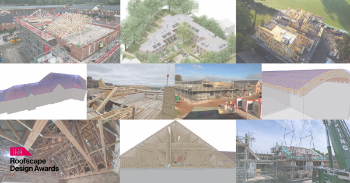Silica
Silicon (chemical symbol Si) is a naturally occurring, non-metallic element and, after oxygen, is the second most abundant element in the earth’s crust, found mainly as silica in sand. Silicates are the chief constituents of many rocks, clays and soils and make up more than 90% of the Earth’s crust.
Silica is silicon dioxide (SiO2). Exposure to silica dust can pose a major health hazard and lead to silicosis of the lung or ‘pneumonoultramicroscopicsilicovolcanoconiosis’, a long-term disease usually caused by inhaling crystalline silica dust, typically over many years.
The Health & Safety Executive’s ‘Control of Exposure to Silica Dust’ advises that when cutting, sanding or carving materials containing silica, a fine dust (Respirable Crystalline Silica (RCS)) is created that may get into the lungs.
Silica – the next asbestos, published by the All Party Parliamentary Group for Respiratory Health in 2020 stated: “Construction workers are still 100 times more likely to die from a preventable occupational disease than from an accident. We also know that approximately 12,000 deaths in the industry each year are linked to exposure to dust and chemicals” and revealed: “… the UK lags other developed nations in terms of exposure limits to respirable crystalline silica, that the scale of silicosis in the construction industry remains unknown and that awareness of the risks is low amongst both workers and employers.”
It goes on to state: ‘RCS is created when it is fractured through processes such as stonecutting and drilling and is the most toxic form of the substance. It increases the risks of tuberculosis, kidney disease, arthritis, Chronic Obstructive Pulmonary Disease, lung cancer and chronic bronchitis.”
In September 2020, The British Occupational Hygiene Society (BOHS) wrote to MPs urging them to take action to prevent these avoidable deaths and illness. Kelvin Williams, President of the Society said: “The society is concerned that Covid-19 is accelerating the rate of death for those exposed to harmful substances, like silica, in the workplace. It is reasonable to believe that the higher Covid-19 mortality rates in older males has an association with inhaling dust in the workplace. However, without the changes recommended in the report, we will not be able to make that connection.” Ref https://www.bohs.org/exposure-to-respirable-crystalline-silica/
Typical activities that may generate RCS include:
- Construction and demolition processes – concrete, stone, brick, mortar;
- Quarrying;
- Slate mining and slate processing;
- Potteries, ceramics, ceramic glaze manufacture, brick and tile manufacture;
- Foundries;
- Refractory production and cutting;
- Concrete product manufacture;
- Monumental and architectural masonry manufacture, stone fireplace and
- Kitchen worktop manufacture, and
- Grit and abrasive blasting, particularly on sandstone.
[edit] Related articles on Designing Buildings
- Asbestos.
- Construction dust.
- Construction health risks.
- Control of Substances Hazardous to Health (COSHH).
- Coronavirus.
- Deleterious materials.
- Demolition.
- Dust control systems.
- Occupational health.
- Personal protective equipment.
- Silcrete.
- Silicon.
- The impact of silicosis on the construction industry.
Featured articles and news
Moisture, fire safety and emerging trends in living walls
How wet is your wall?
Current policy explained and newly published consultation by the UK and Welsh Governments.
British architecture 1919–39. Book review.
Conservation of listed prefabs in Moseley.
Energy industry calls for urgent reform.
Heritage staff wellbeing at work survey.
A five minute introduction.
50th Golden anniversary ECA Edmundson apprentice award
Showcasing the very best electrotechnical and engineering services for half a century.
Welsh government consults on HRBs and reg changes
Seeking feedback on a new regulatory regime and a broad range of issues.
CIOB Client Guide (2nd edition) March 2025
Free download covering statutory dutyholder roles under the Building Safety Act and much more.
AI and automation in 3D modelling and spatial design
Can almost half of design development tasks be automated?
Minister quizzed, as responsibility transfers to MHCLG and BSR publishes new building control guidance.
UK environmental regulations reform 2025
Amid wider new approaches to ensure regulators and regulation support growth.
The maintenance challenge of tenements.
BSRIA Statutory Compliance Inspection Checklist
BG80/2025 now significantly updated to include requirements related to important changes in legislation.
Shortlist for the 2025 Roofscape Design Awards
Talent and innovation showcase announcement from the trussed rafter industry.






















